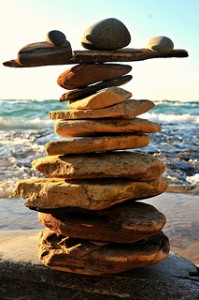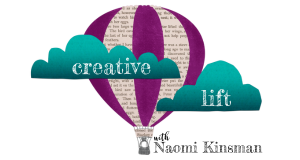 It’s been a while since my last balance post. Yes, life has been busy, and yes, posting has fallen off the list of most important to-do’s. I’m not big on excuses so I probably wouldn’t even mention it. However, my delay is an excellent case in point. It’s essential to know what’s important when seeking balance. Wise advisors suggest that one shouldn’t start a blog if they don’t mean to keep it up on a very regular basis. Same with Facebook pages and Twitter accounts and various other social networks. I disagree.
It’s been a while since my last balance post. Yes, life has been busy, and yes, posting has fallen off the list of most important to-do’s. I’m not big on excuses so I probably wouldn’t even mention it. However, my delay is an excellent case in point. It’s essential to know what’s important when seeking balance. Wise advisors suggest that one shouldn’t start a blog if they don’t mean to keep it up on a very regular basis. Same with Facebook pages and Twitter accounts and various other social networks. I disagree.
I’d much rather have an irregular interesting post from one of my creative friends than not ever see a post from them. But creatives NEED their offline space and time. They can’t commit to constant online chatter. If we’re being honest, we know it’s nearly impossible to predict when a creative storm is coming on and we’ll need to disengage to hole up in our art spaces and imagine. Would any of us really want our creative friends to feel they should stop in the midst of that most-fabulous flow to post on their blog?? No, of course not. We don’t care that they’ve made a basic commitment to post on Tuesdays. We’re not watching our inboxes to see when they’ll post and fuming about this lack of responsibility on the part of these artists. We just check back later. And would we want them to take down their blog and never post again because it’s impossible for them to keep their implied commitment? No.
The current reality for artists is that we need to be online. The old ways of experiencing art: museums, libraries, etc, are all still around, but there are thousands of new ways, too. Part of being an artist is participating in the conversation. Throughout history, artists have soaked up what’s current and experimented with new mediums in order to innovate. For those reasons and others, most of us want to be online in one way or another. We like hearing about our friends’ successes and sharing an insight here and there. We enjoy having new ways to connect with our audience. We like the inspiration and creativity that comes with all the access we have to our friends, to information, to inspiration. What we don’t want is the guilt.
Guilt is one of the key reasons most creatives feel unbalanced. We carry it around with us and let it fill up all the mental space we need for creativity, thinking about all the things we SHOULD be doing. Guilt makes it impossible to work with a clear mind. Since there are programmers creating apps and social networks and thousands of avenues through which to connect and reach out and share our friends’ successes and put good ideas out into the world, not being able to do it all is a fact, plain and simple. Thus, guilt is the default.
I say, let technology work for you on YOUR schedule. Participate in the conversation when you can, and when you need space, trust your artist friends to pick up where you left off. Believe in the power of community. We’ll help you, and we’ll forgive you, and we’ll come back later. Diving into your creative cave is nothing to feel guilty about. We’ll return, we promise, when you’re ready for us.
All right. Manifesto complete. Now, on the topic of technology… It should work FOR you. In order to keep your life balanced, particularly with so much to juggle, some technological systems are likely to help you keep your life in order. Here are some programs that I like best.
Daylite: This Mac software is one of the most amazing I’ve ever used. The program allows me to organize my projects, appointments, contacts and to-do’s all in one database. Between tagging and linking, one can create a network of connections so that I can see all the emails that have to do with a particular project, all the people involved, all the emails from a particular person, all the tasks that have to be done on email, and more. Using Daylite, I’ve been able to keep my work out of my inbox, and when I do have snatches of time to do work, I can easily order my tasks and get them done rather than spend all my time trying to find them.
Evernote: I use Evernote as my virtual filing cabinet. I scan mail into it, notes from events, use it to collect PDF’s and online research and more. I also use the business feature to connect with my team and make even better use of any of our research time. When I need to find a document or note, I no longer have to search through stacks of paper, but can just search Evernote to find that one thing I thought I found that one time. As long as I know a word that is in the document, Evernote can find it. It’s a fabulously powerful tool.
Journal: I keep a journal with me at all times and keep all meeting notes, journal entries, quick notes and thoughts on paper. I know, it’s not technology, but I tried note-taking on my iPad with all kinds of apps until I realized the apps weren’t the problem. I missed the feel of pen on paper. My brain needs that physical connection. Sometimes simple is better, and you have to go with what works for you.
Also, on the journaling/note-taking front: I’ve been experimenting with info-doodling, so the journal is fun to look at, with images and words all mixed together. I can make more sense of what I wrote at a glance, rather than having to wade through words and more words trying to find that one note. One excellent resource to explore info-doodling is the book, The Doodle Revolution, by Sunni Brown.
Habit List: Habit List is an app that helps create a daily to-do list and keep you up to date on the things you want to do more regularly. I use it to keep track of the social media things I’d like to do daily, every other day, weekly and monthly. Having reminders in this list allows me to know what to do when I have those few moments to get online and be social, to help me make the most of the time I spend.
Yearly Calendar: Also, not technology. I have this paper year-at-a-glance calendar on my desk so I can see what to expect in upcoming months, and also so I can keep track of ongoing and changing goals. Here’s a link for a PDF, if you want one too. Blank Yearly Calendar
I’ll share more tools in upcoming posts, but these are some with which to start. I find that too many tools too quickly is worse than no tools at all. In the meantime, I’d love to hear from you. What tools help you maintain balance? What are your thoughts on how artists can revise their relationship with technology and social media to erase guilt and allow creative fresh air?
photo credit: Viewminder via photopin cc
